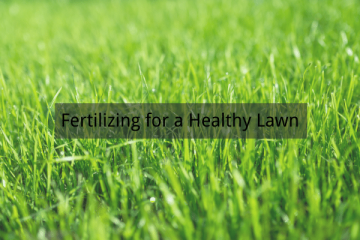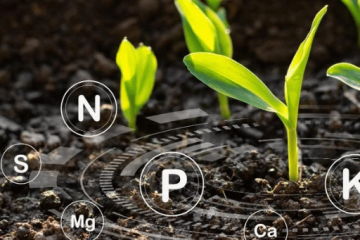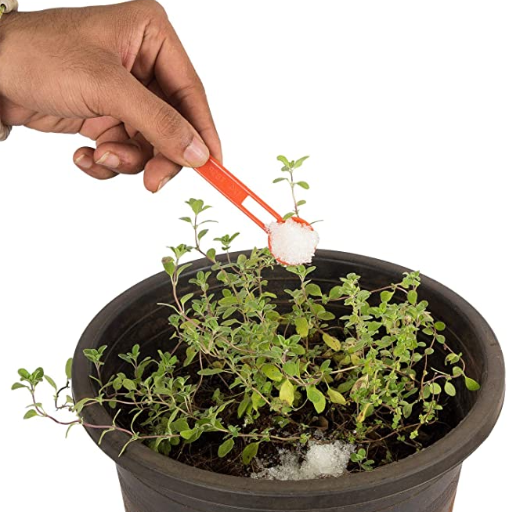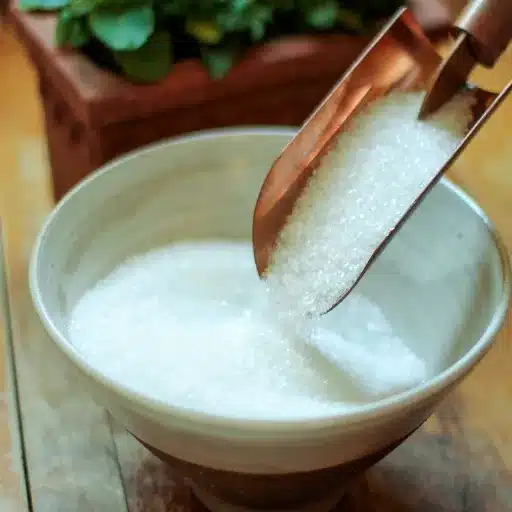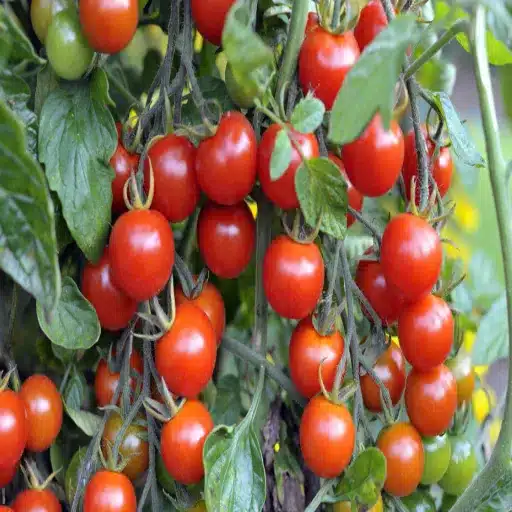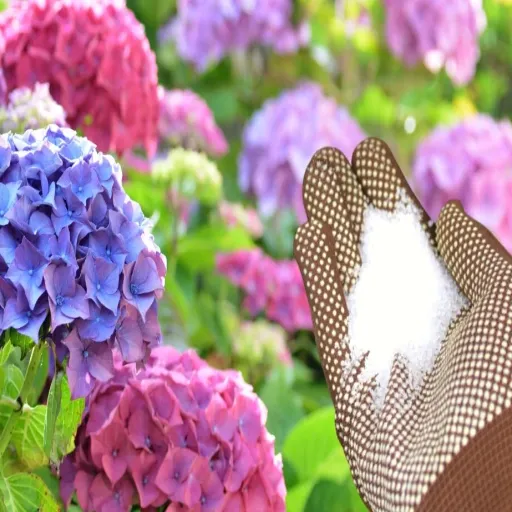Gardening enthusiasts are always on the lookout for natural, cost-effective ways to enhance plant growth and productivity. Epsom salt, a mineral compound scientifically known as magnesium sulfate, has gained widespread attention as a powerful resource for gardeners. Renowned for its high magnesium and sulfur content—essential nutrients for healthy plant development—Epsom salt offers a variety of applications that can address common plant deficiencies, improve nutrient uptake, and boost overall vitality in gardens. This article will provide a detailed guide on the benefits of Epsom salt for plants, its proper usage methods, and practical tips for incorporating it into your gardening routine for optimal results. Whether you are tending to vegetables, flowering plants, or shrubs, understanding how to use Epsom salt effectively is key to maximizing your garden’s potential.
How to Effectively Use Epsom Salt in the Garden
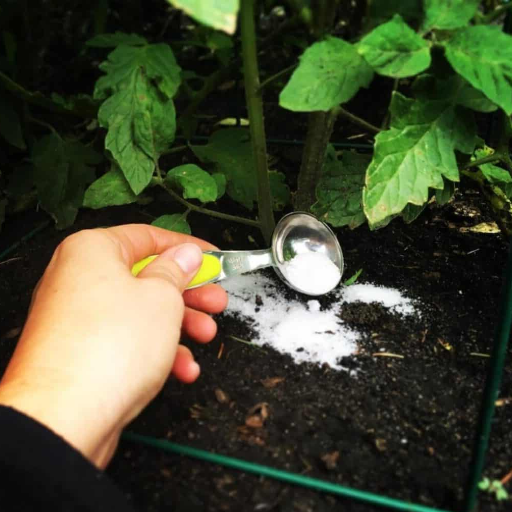
Methods for Adding Epsom Salt to Soil
- Direct Soil Application: In my opinion, certain plants benefit from having Epsom salt applied directly to the soil. The general rule is 1 tablespoon (15 grams) of Epsom salt per square foot of soil, which should be lightly mixed into the top layer before watering the plant.
- Diluted Epsom Salt Solution: For consistent nutrient delivery, I prefer dissolving one tablespoon (15 grams) of Epsom salt per every 1 gallon (3.8 liters) of water. This solution can be applied around the plants’ base once every month, thus aiding root and foliage growth above and below the ground.
- Foliar Spray Method: When I want to target yellowing between the leaf veins (chlorosis) that indicate magnesium deficiency, I’ll use a foliar spray. For this, dissolve 2 tablespoons (30 grams) of Epsom salt into 1 gallon (3.8 liters) of water and spray the leaves thoroughly. Do this in the mornings or late afternoons to avoid sun burns on the leaves.
By following these methods and adhering to these technical requirements, plants are guaranteed to benefit from over-application-induced robust growth and enhanced nutrient absorption without risking salt build-up in the soil.
How Much Epsom Salt Per Gallon of Water?
Determining the quantity of Epsom salt to use for application or plant needs differs with every case and each plant. The measurements are as follows:
- For Foliar Spray: To mitigate the risk of salt burn on the leaves, make sure to apply the solution for foliar spray prepared by mixing 30 grams of Epsom salt in a gallon of water in the early morning or late afternoons for its usage. At these times, leaves would be in less contact with sunlight, therefore minimizing the risk of additional sun damage. For effective absorption through the leaves, aim to apply 30 grams of Epsom salt per foliar spray for every 3.8 liters or a gallon of water.
- For Soil Drench: Use 1 to 2 tablespoons (15 to 30 grams) of zmakron salt solution per gallon of water for general soil application. This assists with magnesium salt deficiency for the soil, while also helping with root growth. Avoid using excessive amounts of salt to mitigate the risk of resulting salt deposits.
- For Seed Starting Mixes: Make sure that young seedlings are not overfed by adjusting the amount of salt that should only be 5 grams per gallon of water.
Each factors is calculated to attempt balance and ideal to support plant growth and growth at the same time. They support magnesium, sulfate levels but with limitations on danger effect of nutrient imbalance or saline soil. On a regualar basis, it is suggested that plant health is monitored along with soil quality to be able to change rates accordingly.
Best Practices for Applying Epsom Salt to Plants
Achieving the desired results from applying Epsom salt on plants requires following some dos and don’ts that minimize the possibility of having too much or too little of nutrients or unfavorable soil conditions.
- Dilution Ratio: In most cases, 1-2 tablespoons of Epsom salt serves gallon of water is ideal for most plants. This assures that the concentration of magnesium and sulfate will not be too much and the soil’s ecosystem won’t be negatively impacted. This can be done once every four to six weeks while the plant is growing.
- Direct Application to Soil: For treating Epsom salt deficient soils, Epsom salt should be sprinkled on the surface of the soil at the rate of approximately one tablespoon per square foot of soil. This will ensure that magnesium has the opportunity to dissolve and also prevent salts from building up too much.
- Foliar Spray: For plants that are deficient in magnesium, mix one gallon of water with one tablespoon of Epsom salt and treat the deficient area with it. The magnesium should be applied as early as possible, ideally before the sun is too strong or at the end of the day to help maximize the amount absorbed.
- Test Soil Regularly: Conduct soil tests to check the existing level of nutrients present, especially the amount of magnesium, sulfate, and sodium. To prevent having too much, keep concentration levels of magnesium in the soil within the standard 40-120 ppm.
- Avoid Over-application: Еxcем salt should not be overused, for it can lead to saline soil, which can impact the plant’s growth and the overall health of the soil. Always measure accurately and adjust according to the type of plant as well as other existing conditions.
Maintaining these principles allows for an effective integration of Epsom salt into plant care while preserving the quality of the soil. This method becomes more effective when coupled with in-field monitoring and further technical modifications.
Can Epsom Salt Prevent Blossom End Rot in Peppers and Tomatoes?
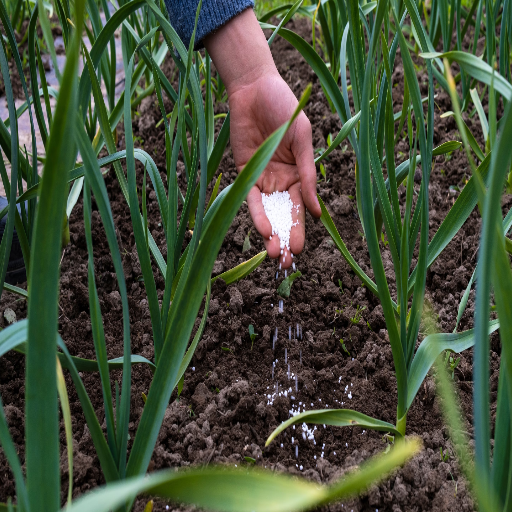
Understanding Blossom End Rot
Blossom end rot is a physiological disorder appearing in peppers and tomatoes due to calcium deficiency within the fruit. As a result, it usually develops as dark, sunken lesions at the blossom end, impairing both fruit quality and yield. In my experience, maintaining consistent calcium accessibility, together with stable soil moisture levels, is critical in avoiding such issues.
- Calcium Levels: It is suggested to maintain soil calcium levels between 1,000 to 2,000 ppm. Low calcium within the root zone is a direct contributor to the disorder. Regular soil testing, and amendment applications such as agricultural lime or gypsum can alleviate some deficiencies.
- pH Range: Keeping soil pH within a range of 6.2 to 6.8; overly acidic and alkaline sods greatly restrict calcium uptake, even when present in the soil.
- Water Uniformity: Ensure a stable irrigation frequency, as moisture fluctuation in the soil can hinder calcium movement into the growing fruit. Drip irrigation is the most effective method of achieving uniform soil moisture.
- Fertilization Practices: Minimize use of nitrogen rich fertilizers, especially those in ammonium form, as these tend to limit calcium uptake. Use more balanced nitrogen containing fertilizers, stressing the nitrate as nitrogen source.
Following these boundaries, along with routine soil and tissue analysis, I have found that controlling the conditions for blossom end rot is fairly simple.
How Epsom Salt Can Help Prevent Blossom End Rot
In my view, Epsom salt, or magnesium sulfate, can indirectly assist in controlling blossom end rot by maintaining adequate available magnesium in the soil. Magnesium is a vital element of plant nutrition considering its role in photosynthesis and general plant growth, although it does not solve calcium deficiency problems, which are the primary cause of blossom end rot. Nevertheless, solving magnesium deficiency problems is beneficial for fulfilling other nutrion-deficient conditions, including calcium.
- Magnesium Levels: The soil test should indicate a magnesium concentration of 25-50 ppm about the magnesium content of the soil. This level will be non-deficient for plant processes, whilst not being too antagonistic for calcium uptake.
- Application Rate: In the case of magnesium deficiency, Epsom salt can be used at 1-2 tablespoons per gallon of water for soil or foliar sprays once a month without reaching application limits. However, care must be taken not to exceed the limit.
- Calcium-Magnesium Interaction: Always ensure that magnesium does not interfere with calcium utilization. For a good nutrient supply, the soil calcium to magnesium ratio should be 3:1 to 6:1.
Even though Epsom salt can help with general plant wellbeing, my first point of action is dealing with calcium-related issues through soil amendments such as gypsum or lime in combination with proper watering and soil management to deal with blossom end rot.
Are There Risks of Overusing Epsom Salt in the Garden?
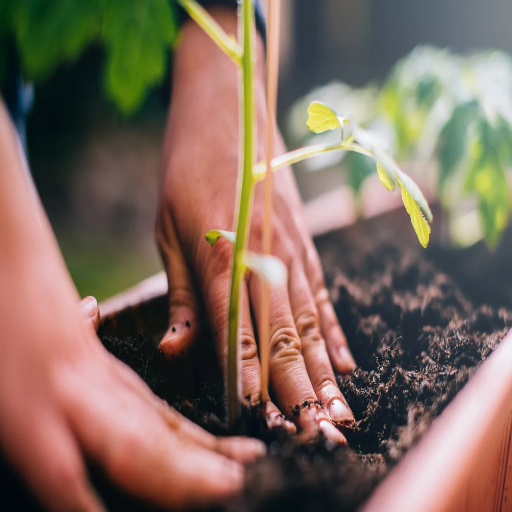
Signs of Magnesium Deficiency or Overload
Deciencary symptoms of magnesium deficiency in plants are detected through interveinal chlorosis, which is yellowing between the veins. The deficiency is first noticed in older leaves since Magnesium is a mobile nutrient. This means it can be relocated to new growth regions in new leaves that are formed during deficiency periods. Later stages may exhibit curling of the leaves, brittleness, or dropping of leaves before expected. Certain species variations should be expected as some plants do show differences or variations in signs of deficiency.
However, an excess of magnesium may lead to nutrient disorders by causing interference to calcium and potassium uptake. The surplus of magnesium is mostly bound to lead to fruit and crop production due to competitive malnutrition of indispensable elements. Permissive magnesium levels are dependent on the soil type, but it should generally be 10%-20% magnesium saturation on the soil Cation Exchange Capacity (CEC) with for sure calcium at 65%-75%.
Properly correcting deficiency or excess error must start determination of magnesium quantity and other nutrients through well targeted soil tests. The application of selected targeted fertilizers or amendments must be tuned to the desired state of the soil and the plants about the most affected magnesium sulfate for incorrect gypsum for excess, which must all be well coordinated.
Balancing Epsom Salt with Other Plant Fertilizers
Efforts must be made to avoid the potential overusage of nutrients, when magnesium sulphate (Epsom salt) is mixed with other fertilizers, by respecting the needs of the target soil and plant system. The most important thing magnesium sulfate contributes are magnesium (Mg) and sulfur (S), which are necessary for chlorophyll and enzyme production.
- Magnesium levels (Mg): Soils tests should ideally indicate magnesium is within the scope of 50-120 ppm. Higher amounts of magnesium could lead to problems of calcium uptake and soil structure.
- Sulfur levels (S): Ideal sulfur is anywhere from 10-40 ppm depending on crop requirements. Too much can lead to soil acidification.
- Calcium-to-Magnesium ratio (Ca:Mg): The ratio should remain in between 3:1 – 7:1. This range provides highest cation exchange and allows healthy root development.
- pH levels: Optimum magnesium availability is within the ranges of pH level of 6.0 to 7.0; increased or lower levels result in a decline.
The application of Epsom salt must be done in precise amounts and applied only when soil tests call for it. If sulfur is needed, other sources like ammonium sulfate may be more appropriate when magnesium levels are sufficient. Likewise, when correcting calcium or magnesium excesses, Epsom salt may not be the best choice when gypsum or dolomite lime will do.
How Does Magnesium Sulfate Affect Houseplants?
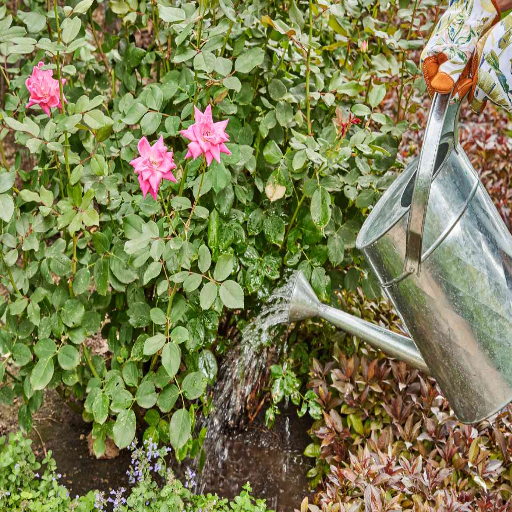
Benefits of Epsom Salt for Houseplants
Epsom salt (or Magnesium sulfate) provides key nutrients that can aid in the growth and health of houseplants. Here are glucose’s most important advantages:
- Magnesium Supplementation: Magnesium aids in the formation of chlorophyll, which is necessary for photosynthesis to occur. Magnesium amplifies a plant’s ability to create energy and aids in maintaining a green and healthy plant. These salts should be applied once a month at a dosage of 1 to 2 tablespoons per gallon of water, but only if a deficiency is noticed.
- Improved Nutrient Uptake: Magnesium sulfate helps to improve growth and flowering in plants, thanks to its sulfur and sulfate content. Sulfate ions can aid in the advancement of internal nitrogen and phosphorus-laden parts of the plant, which enables better nutrient absorption.
- Support for Flowering and Fruiting: Magnesium also assists in the formation of flower and fruit buds which assists in improving productivity of edible and decorative houseplants.
Use with caution as overuse can create negative issues such as salt buildup in soil or nutrient imbalance. Always make sure to analyze the plant and soil’s state before applying to achieve the best results.
Application Tips for Indoor Plants
Monitor Soil and Vegetation Condition: Magnesium level and soil pH sampling should be completed regularly for gradualism estimation with soil test kits to ascertain if the magnesium deficiency pertains. Known optimal pH ranges for most domestic plants is between 6 – 7. Modifications should be carried out as per this ascertainment.
- Dissolve in the Correct Quantity: One teaspoon per gallon of water for general Epsom salt (sulfate of magnesia) foliar feeding will do the job, it may be even increased up to two teaspoons per gallon for more intense flowering or fruiting stages, but that is the maximum allowable threshold without risking nutrient overdose.
- Intervals Between Applications: Dilution campaigns should be targeted for every four to six weeks for longitudinal maintenance purposes. During the growth height like spring and summer manifest estival growing seasons applications may occur after a quarter, but only in the advent of conspicuous signs of droughts.
- Check for Deficiency Symptoms: Notable symptoms of magnesium deficiency that are easily recognizable would be the aging of leaves difference of color in narrow leaf veins which we refer to as interveinal chlorosis. Close these gaps, but do not supplement the magnesium needlessly where symptoms signaling its deficiency are lacking.
- Avoid Over-Application: Too much magnesium can cause a buildup of salts, which may hinder the uptake of calcium and potassium. Leach the soil with water from time to time to reduce leaching.
Maintaining continuous supervision along with modification of organizational care practices relative to these metrics will ensure that the health and productivity of indoor plants are maximized while mitigating risks.
Related Articles on the Use of Epsom Salt in the Garden
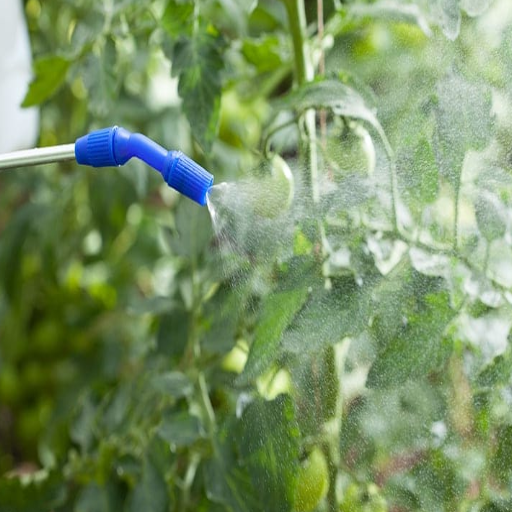
Gardener’s Guide to Epsom Salt for Flowers
When applying Epsom salt on flowers, doing it right can unlock some great benefits. In my opinion and understanding, Epsom salt, which is magnesium sulfate, serves as an aid to blooming and improving the colors of flowers. Here are some details and precautions that you need to keep in mind for proper utilization:
- Application Rate: For foliar sprays, which can be done every 2 to 4 weeks, use about 1 tablespoon of Epsom salt per gallon of water. This balances magnesium and sulfur intake with the plant’s needs.
- Corrective Soil Application: For general application to the soil, spreading one teaspoon per square foot around the stems of flowering plants works well, provided that the soil is lightly watered afterwards to promote absorption.
- Testing Soil pH: Always check the pH of the soil along with magnesium content before application. Epsom salt works best in low magnesium, mildly acidic to neutral soils with a pH of 6.0 to 7.0. Soils that are high in pH and magnesium have the potential to cause nutrient deficiency.
- Appropriate Implementation: Attend to high-risk plants such as roses, petunias, and tomatoes, which are known to have magnesium deficiency and display yellowing leaves as one of the first signs.
By fine-tuning these factors and monitoring plants’ reactions, you can optimize the advantages of Epsom salt for your flowers while minimizing the risk of overuse or wasting treatment.
Enhancing Seed Germination with Epsom Salt
Epsom salt, scientifically termed as magnesium sulfate (MgSO₄), serves as an improvement method which solves two huge problems with magnesium and sulfur deficiency, required for chlorophyll production as well as protein synthesis. If Epsom salt is taken during the germination process, the seedlings are bound to grow stronger and faster.
- Pre-Planting Treatment Method: Take a tablespoon of Epsom salt, pour it into a gallon size water container, and let the seeds soak for around 12 hours before planting. In this way, seeds will directly get the magnesium and sulfur they require.
- Direct Soil Application Method: Epsom salt can be sprinkled into the topsoil at a rate of roughly one teaspoon per square foot of space while being careful not to over apply.
- Watering Schedule For Plants: The first couple of weeks after putting seeds into the ground, be sure to periodically use a diluted Epsom salt mixture (One teaspoon per one gallon container). During crucial first development stages, this mixture will help the seeds gain the nutrients they need.
If followed diligently, these instructions can help turn the inconsistent seed germination to healthier outcomes alongside the use of Epsom salt.
How to Make Your Lawn Greener Using Epsom Salt
Doing the following will enable you to create a greener and more vibrant lawn using Epsom salt. Here’s how to do it:
- Know the Lawn: Salt, magnesium sulfate hydrate, or MgSO₄. contains magnesium, which promotes the formation of chlorophyll, and sulfate, which improves the availability of nutrients to the grass.
- How to Apply: Mix 2 tablespoons of Epsom salt in a refined gallon of water. This solution will cover roughly 250 square feet of lawn area. When H2O is too concentrated, it will dilute magnesium and sulfate too far beyond the point of effectiveness – causing undue stress to the plants.
- Timing: The Epsom salt solution should be spread every 4-6 weeks in the growing season (mid-spring through early fall). Avoid using it during draughts and extreme periods to prevent harm to the grass.
- Method: Using a garden sprayer will yield the best results. Spraying allows the user to fine-tune coverage. The goal is to cover the entire area without drowning any one section.
These technical requirements achieve the equilibrium of nutrients in the soil which improves the color, health, and resilience of grass.
Reference sources
Frequently Asked Questions (FAQs)
Q: What is Epsom salt, and how does it benefit garden plants?
A: Epsom salt, chemically known as magnesium sulfate, is a soluble compound that can benefit garden plants by providing essential nutrients like magnesium and sulfur. These nutrients help plants grow bushier, improve the uptake of other nutrients, and enhance the overall health of garden plants when used appropriately.
Q: How do I use Epsom salt in gardening?
A: To use Epsom salt in gardening, dissolve 1 tablespoon per gallon of water and apply it to the soil around the plants every two weeks. This method helps ensure that the key nutrients are readily available for uptake by the plants.
Q: Can Epsom salt be used on all types of plants?
A: While many plants can benefit from Epsom salt, it is particularly beneficial for plants like tomatoes and peppers, rose bushes, and azaleas. These plants require magnesium to produce vibrant blooms and healthy foliage.
Q: How does Epsom salt enhance the growth of pepper plants?
A: Epsom salt enhances the growth of pepper plants by providing magnesium, which is an essential nutrient for photosynthesis and helps in the formation of chlorophyll. This results in bushier plants and more robust fruit production.
Q: What precautions should I take when using Epsom salt for plants?
A: It is important not to overuse Epsom salt, as it can build up in the soil over time. Conduct a soil test to ensure that your garden soil is not already high in magnesium. Use Epsom salt sparingly and only when a soil test indicates a deficiency in this particular nutrient.
Q: How does Epsom salt help with pest control in the garden?
A: Epsom salt can help deter pests when used as a foliar spray. The magnesium content strengthens the plant’s cell walls, making them less susceptible to pest attacks. However, it is not a replacement for traditional pest control methods.
Q: Can I use Epsom salt on evergreen plants?
A: Yes, Epsom salt can be used on evergreen plants to revitalize their growth. Apply 1 tablespoon per foot of plant height around the base of the plant to give your plants the necessary nutrients for robust growth.
Q: How does Epsom salt interact with calcium in the soil?
A: Epsom salt can improve the solubility of calcium in the soil, which is vital for plant health. By providing magnesium, Epsom salt helps balance the calcium-to-magnesium ratio, allowing plants to absorb both nutrients efficiently.

